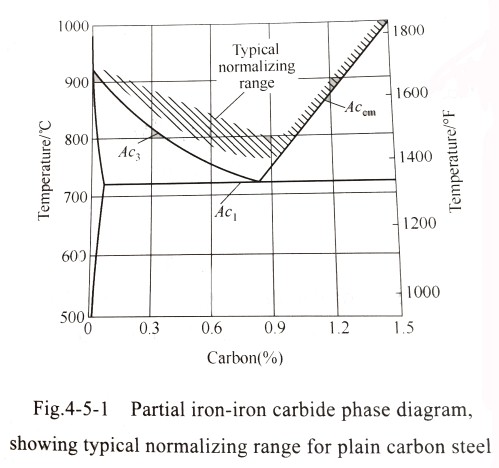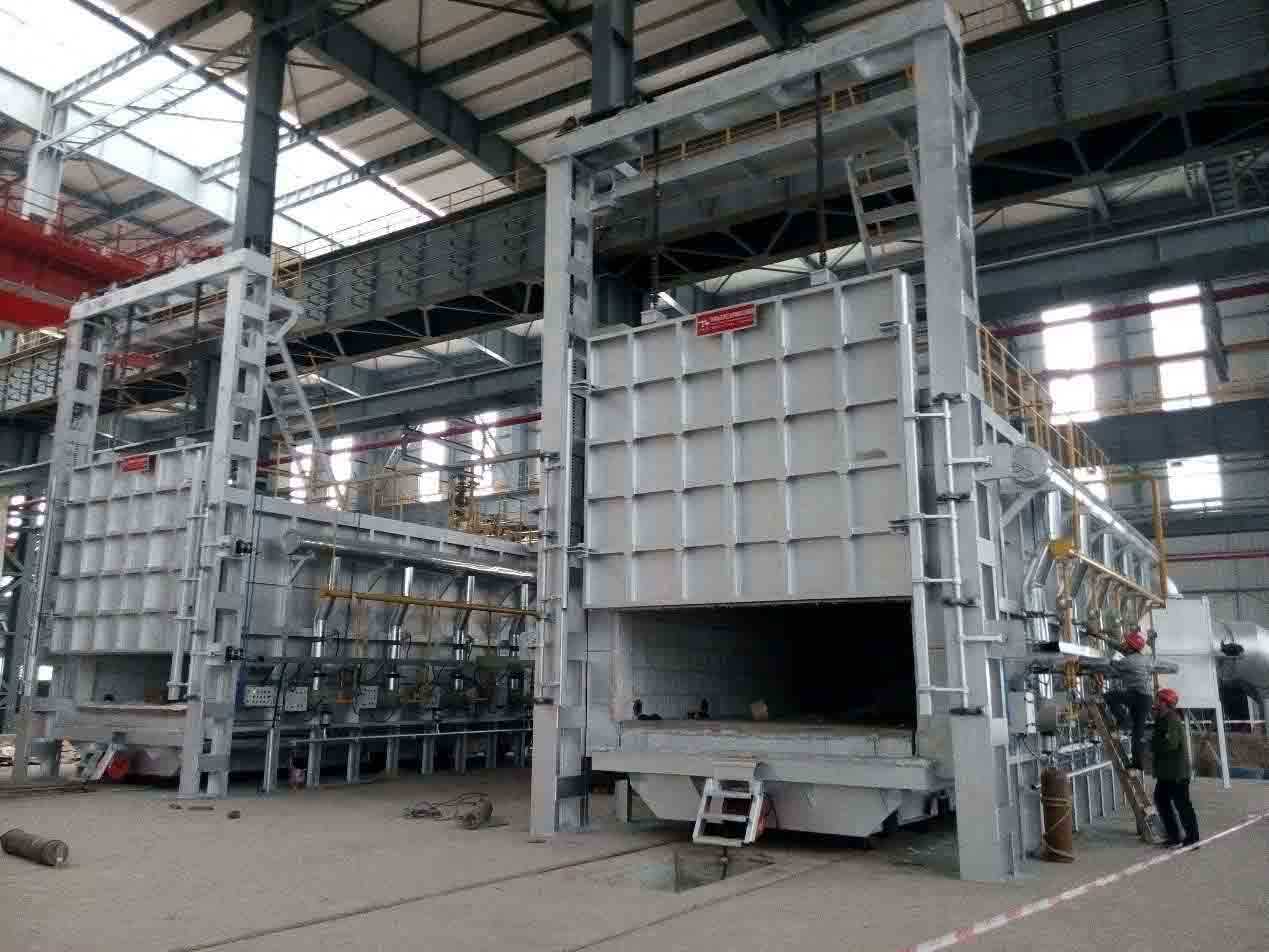Normalizing of steel
Jan.03,2017
Normalizing of steel is a heat treatment process that is often considered from both thermal and microstructural standpoints. In the thermal sense, normalizing is an austenitizing heating cycle followed by cooling in still or slightly agitated air. Typically, the work is heated to a temperature about 55℃ above the upper critical line of the iron-iron carbide phase diagram, as shown in Fig.4-5-1, that is, above Ac3 for hypoeutectoid steels and above Ac3 for hypereutectoid steels.
A broad range of ferrous products can be normalized. All of the standard low-carbon, medium-carbon and high-carbon wrought steels can be normalized, as well as many castings. Austenitic steels, stainless steels and maraging steels either cannot be normalized or usually are not normalized.

The purpose of normalizing varies considerably. Normalization may increase or decrease the strength and hardness of a given steel in a given product form depending on the thermal and mechanical history of the product. Actually, the functions of normalizing may overlap with or be confused with those of annealing, hardening and stress relieving. Improved machinability, grain structure refinement, homogenization, and modification of residual stresses are among the reasons for which normalizing is done. Homogenization of castings by normalizing maybe done or order to break up or refine the dendritic structure and facilitate a more even response to subsequent hardening. Similarly, for wrought products, normalization can obliterate banded grain structure due to hot rolling, as well as large grain size or mixed large and small grain size due to goring practice.


